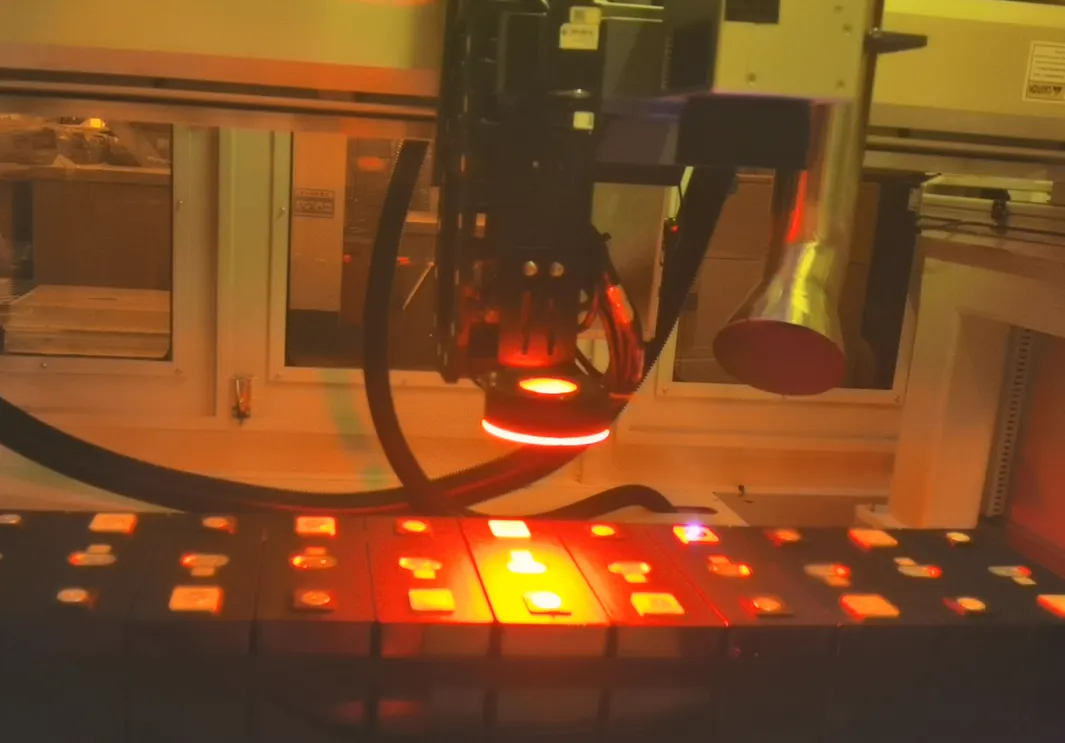As the world shifts towards sustainable energy solutions, the manufacturing processes behind green technologies, such as lithium-ion battery modules, must also align with environmental goals. Laser cleaning has emerged as a transformative technology in this domain, offering a sustainable, efficient, and eco-friendly alternative to traditional cleaning methods. This article delves into how laser cleaning contributes to sustainability in battery module manufacturing.

The Environmental Impact of Traditional Cleaning Methods
Conventional cleaning methods in battery production, such as chemical cleaning and abrasive techniques, often pose significant environmental challenges:
Chemical Waste: Traditional chemical cleaning generates hazardous waste that requires proper disposal, adding to the environmental burden.
Resource Consumption: These methods often consume large quantities of water, energy, and cleaning agents.
Air and Water Pollution: The by-products of chemical and abrasive cleaning can contaminate air and water, impacting ecosystems.
Laser Cleaning: A Green Alternative
Laser cleaning eliminates the drawbacks of traditional methods, offering a clean, sustainable solution. Here’s how:
Zero Chemical Usage: Laser cleaning relies solely on focused laser beams, removing the need for harmful chemicals and significantly reducing waste generation.
Energy Efficiency: Advanced laser systems are designed to consume minimal energy, aligning with energy conservation goals.
Reduced Waste: The process produces no secondary waste or residue, making it an inherently clean technology.
Minimal Resource Usage: Unlike methods requiring water or abrasive materials, laser cleaning is a dry process, conserving natural resources.
Supporting Circular Economy in Battery Production
Laser cleaning also plays a role in promoting the circular economy, particularly in the reuse and recycling of battery modules:
Battery Refurbishment: By precisely removing contaminants and restoring surfaces, laser cleaning facilitates the refurbishment of used battery modules, extending their lifecycle.
Material Recovery: Cleaned components are easier to recycle, allowing manufacturers to recover valuable materials and reduce raw material dependency.
Enhancing Workplace Safety
Sustainability isn’t just about environmental impact; it also involves creating a safer working environment. Laser cleaning improves safety by:
Eliminating exposure to toxic chemicals.
Reducing airborne particulates generated by abrasive cleaning.
Automating processes to minimize human intervention in hazardous areas.
Driving Efficiency and Sustainability Together
While sustainability is a primary advantage, laser cleaning also enhances production efficiency. Its precision, speed, and consistency reduce downtime and defects, contributing to both ecological and economic benefits.
Conclusion
Laser cleaning is more than just a cleaning technique; it is a step toward a more sustainable future in battery module manufacturing. By replacing resource-intensive and polluting methods, laser cleaning aligns with global efforts to combat climate change and promote green energy technologies. For manufacturers, adopting this technology is not just a choice but a commitment to a cleaner, greener, and more efficient production process.
If sustainability and efficiency are priorities for your manufacturing process, exploring laser cleaning solutions is an investment in both your business and the planet.



